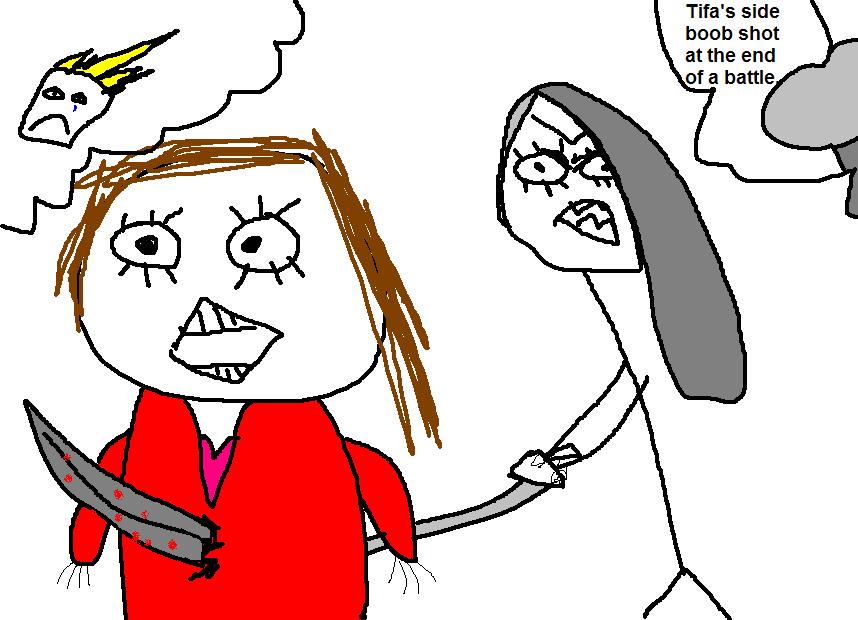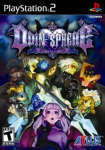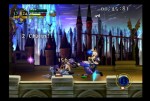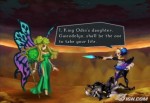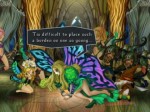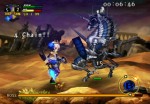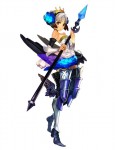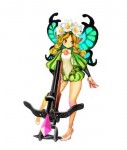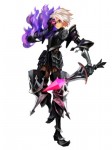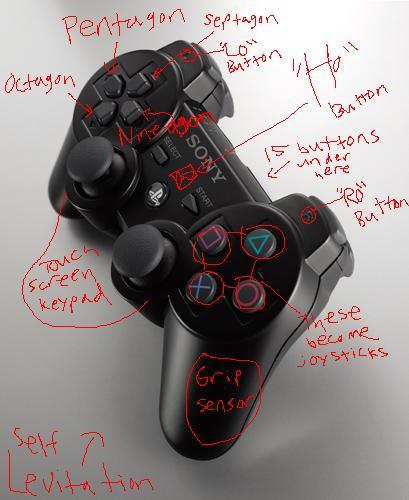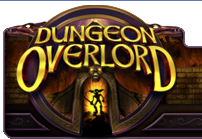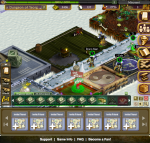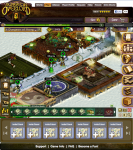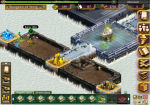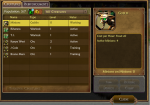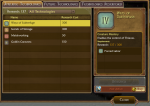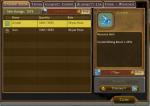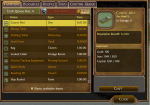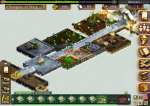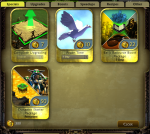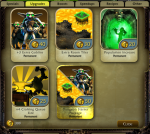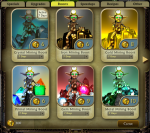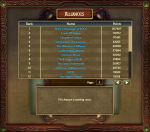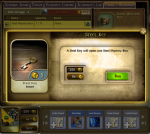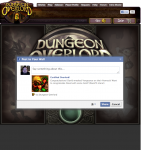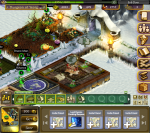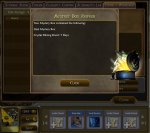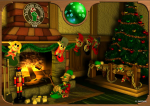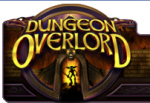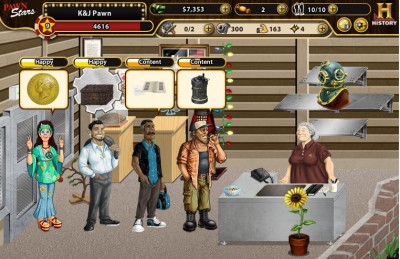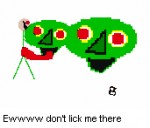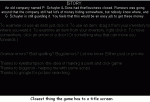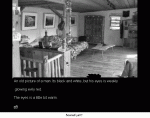
Category Archives: Games
Game reviews/articles.
My Favorite Moment of Final Fantasy 7
Odin Sphere (PS2) Review
Developer: Vanillaware | Publisher: Atlus || Overall: 9.0/10
Warning: This review has spoilers since the game is like 5 years old at this point.
If ever a game has attempted to be Shakespearean in its story delivery, it is Odin Sphere. Odin Sphere is a side-scrolling action beat-em-up game starring five different playable characters. The story and how it is presented is very much the forefront on what is “unique” about this game, but the mechanics involved are also very robust and allows for a challenging experience whether or not you want one.
Without doing much research or knowing much about the game beforehand, if you dive right into it, you’ll probably be a little bit confused. Confused because you start out the game as a little girl in the attic of the house she presumably lives in. You’ll see a book, and then you’ll see a cat named Socrates. Nothing really happens unless you start reading the book at which case you’ll begin the story of Gwendolyn, the daughter of the Demon Lord Odin.
My personal experience with the game began 2 or so years ago. I had played the game quite a bit but never actually beaten Gwendolyn’s storyline, so when I had actually gotten through her book, it was quite intriguing to see the oh-so-dramatic events and the ending for Gwendolyn.
For the first 5 books, you will play characters who are somehow connected to the royalty of the world of Erion. The five different characters go through the events of the story from their points of view, and will occasionally fight or interact with other characters you have controlled or will control later on. Needless to say, the story itself is very non-linear and if you stick with it you will see an interestingly multifaceted story unveil before you. The only thing that detracts from this are the boss battles in which you defeat bosses in different areas or under different circumstances, but still the same fight when all is said and done. It feels kind of weird “killing” or severely debilitating the same dragon repeatedly, considering he had just been defeated or will be defeated again by another one of the characters you play in what seems like a day or two story-wise.
Besides the blatant “replay the same game 5 times” aspect of the game, which you really kind of do, they do toss in different mechanics for each of the characters you play with. The different weapons and characters all have unique and different feels, and it keeps the gameplay more-or-less fresh as you go and play through the story again. As for the mechanics itself, you will mostly be hitting the Square button over and over. Jumping and the direction of the analog stick while you press the Square button affect the type of attacks you do, and it is a pretty standard combo fighting system. There aren’t any huge combos to pull off, but most of the challenge in the game comes in the strategy in which you defeat the enemies that are laid out before you in each section. Almost every character is able to parry attacks and perform knock-backs. Gwendolyn, using a spear, can block and glide around the map. Cornelius, using a sword, can block attacks and do a spinning attack in mid-air. Mercedes, using a bow, can fly, charge her attacks, and use a unique magic spell. Oswald can activate shadow powers and make all of his normal attacks hit around twice as hard and twice as fast for a short period of time. Velvet, using chains, can attack all around her, charge an attack and swing across the map. Using each individual character’s strengths to your advantage is vital to defeating the challenges presented.
Each character has the same repertoire of magic “Psypher” attacks, but they are earned in a different order. The essential purpose of these Psypher magics are to make the game easier for you — you will need to use them to defeat tons of enemies or defeat a boss you just had enough of instead of just spamming your basic attacks. Basic attacks can also only be spammed to a certain point, as they are limited by a POW gauge. The POW gauge will decrease as you use your basic attacks and then you’ll have to run around or stop attacking for a few seconds for the gauge to fill again. If you fully deplete the POW gauge you will stun yourself for a good 4 to 5 seconds waiting for the gauge to fill to 100% again before being able to move. A lot of the strategy you employ during the harder fights in the game rely on a careful balance of your attacks and trying to be conservative in your spams. The game mechanics are fairly engaging and can be quite fun despite its simplistic approach.
What makes the game more of an Action RPG is obviously with its leveling and, to a lesser degree, alchemy system. Your Psypher and your Character each have independent levels. The main way to increase your levels is by the way you use Phozons. Phozons are magical orbs that appear after you defeat an enemy. You can choose to absorb the Phozons into your Psypher weapon or put a seed into the ground and after a certain amount of required Phozons, pick the fruit (or meat) that grows out of the ground. You also have a limited storage menu so you’ll have to constantly be managing it as you play through each section. The food that you can buy or grow in the game can also be used between levels to increase your hit points and gain more experience at a more efficient rate than just eating the food alone. When you are able to access the Pooka Village, you can visit either of the two restaurants and have them cook up something using your food and adding some permanent hit points. Using these restaurants are vital to increasing your characters stats — the natural hit point increases from leveling up are about half the amount you actually want to have by the end of each book… at least on Easy mode.
One of the things Odin Sphere has going for, or against it, is its difficulty. I started playing the game on normal, and ended up dying so many times on shitty trash (non-boss) enemies that I changed the difficulty to Easy. It was more-or-less smooth going from there, but there were still some tricky bosses that made me question whether or not I was still on Easy. The bosses at the end of the game were also quite difficult for an “Easy” setting, which makes me wonder how hard the Normal and Hard settings actually would be. It really made me question what kind of enjoyment people get out of dying over and over on games like this… it really isn’t that much fun to keep dying, but to each their own, I suppose.
The visuals are definitely one of the other unique aspects of this game. Vanillaware is known for their awesome-looking 2D hand-drawn visuals that stray from what you normally see in gaming today. They also like to draw chicks with huge boobs and sexy legs and little to nothing to cover it all. Girls with less-emphasized features also exist in the game, so it’s not that “one-sided” as far as it goes. Suffice to say, all of the chicks — even the queen of death — are all banging and who wouldn’t want to see these chicks getting ass-rammed with their boobs flopping around? There’s a lot of provocative fan-service animations and poses the female characters in the game do, as well.
The art style is also interesting because you will see giant men who have toothpick legs. Not all of the men in the game are that disproportionate, and there are a couple of different mythological races in the game such as Dwarves and Fairies. Most of the game is influenced by Norse mythology and mixes in with normal fantasy, and the art style definitely goes with what is going on, as it is essentially a “storybook” being read by the little girl in the attic every time you start up the game.
The point of the game probably won’t culminate into much of a cohesion until the end of the game, which all of the events that transpire in each individual character’s book leads to. The last phase of the game is a series of five difficult boss battles, and provided you leveled each of the characters appropriately and they have enough items to assist them in the final battle, you will choose one character to fight each boss up to the game’s ending.
The game begins to split its path when you choose the correct or “incorrect” character for a particular end boss. Each boss is to be paired against one of the characters you have played as “the prophecies state” that you collect while playing the preamble. There is a satisfying ending as long as you choose the correct characters, but there’s not a whole lot that is “plainly explained” in the context of the story. The purpose of the girl, which I believe her name is Alice, at the beginning is more-or-less justified, giving the story, which you thought as a “child’s story” to be something more of a sad, dark history of the world she lives in. When Cornelius and a Pooka-cursed Velvet appear in the attic she has been reading her books in, it affirms that the books her “grandpa loved to read so much” actually were real after all. The set of five books, including the Armageddon and Wheel of Fate books combined ends up being the “Odin Sphere” book written by an unnamed, unknown character whom we can only assume the identity of. It can be also be inferred that the writer is “you” since you were there at all of the events that had transpired.
I sort of wish that they would have added a little bit more of an explanation on certain things that were left open to interpretation in the game. The question behind who wrote the Odin Sphere book series is probably the biggest question, and how Cornelius and Velvet affect the world after they turn back into humans, and where the people of Valentine originally came from, and what the actual origin of the mechanically alien-like Cauldron is. The total rounding up of all the loose ends wouldn’t have taken much effort, considering they were more-or-less extraneous aspects of the story that were still interesting.
I spent a good 40 hours or so on this game, and I probably would have liked to spend about 10 hours less than I did, having to beat the same bosses over and over, in what seems like a forced fashion. They could have, and should have trimmed any of the “forced” boss encounters, especially considering you don’t even get any experience from those battles anyway. Once you complete a book, it’s nice being able to replay the story from the beginning, but all of the locations you opened up through your first time through should have been open as well so that people trying to grind up levels a little bit for the Armageddon didn’t have to go through the same stuff again.
The inventory UI, while having an interesting take, was probably the most frustrating thing about the normal gameplay. I wished so many times that I could open the bag view and use all my items there rather than having to use it through the swirly-circle-single-bag-at-a-time interface. I would lose items many times and just go through each of my bags not remembering or not knowing or not seeing where something went. Once all of the books opened up and I was grinding levels for the Armageddon, there is no way to change books without resetting the game entirely — that seemed like an oversight on the part of the design team.
Odin Sphere can be a real challenge to get through and see it through, but I feel like it’s worth it, since what the game set out to do is probably not going to be done again. I loved the art, I loved the way the story was told, and the game play was a good stylistic compliment.
The New PS3 Controller
Hardware vs. Software Backwards Compatibility
There is a lot of debate currently over if the next generation of hardware from Sony (and maybe even Microsoft?) will support backwards compatibility.
In a word, yes, they most certainly will. As I am favorable to the Sony line of video game consoles, I am obviously more educated on their practices and the user experience I have with them, not to mention the long-term investment of my gaming collection in the PlayStation brand.
But, “in what form?” is the question that should be asked about backwards compatibility — not whether or not it will be around… Backwards compatibility comes in two fashions, looking forward:
1. Disc-based (hardware) backwards compatibility.
2. Software (storefront/online/digital) backwards compatibility.
Disc-based BC is less appealing to Sony as they can’t continue to make profits off discs after the fact, besides downloadable content, and that, at best, is probably not as profitable as we might think for most games.
By making consumers’ libraries of disc-based libraries incompatible with a potential PlayStation 4, it has the following potential benefits for Sony:
1a. Consumers will repurchase games they have.
This is obviously very attractive to all the businesses involved. The repurchasing of games that are “re-mastered” via disc, and also “re-mastered” (aka “made compatible”) with the current generation of hardware. People get to rebuy the 30 dollar/50 dollar/60 dollar games they bought in the past for varying amounts of money and benefit from software BC, which is explored below. This will also get them “new” sales from consumers who only bought games used to begin with.
1b. Consumers will “switch to Xbox” if their current libraries are cut off from them.
This is the counterweight to 1a. However, this is not the only option presented to gamers who are suddenly cut from their existing libraries. A portion of them will obviously become floaters, but they may also come back later in the generation when the hardware is cheap.
There are some that will undoubtedly choose the next Xbox (or Wii U?) as their “main console” for this reason alone, but whether or not Sony actually cares about this depends on how much focus grouping they can do and whether or not disc-based backwards compatibility actually IS a factor to keeping existing consumers who own a PlayStation 3.
I personally would assume that 1a > the losses from 1b in the long-run plus the costs of accommodating disc-based backwards compatibility (which may or may not include actual extra hardware in the box).
The result and purpose of the loss of disc-based backwards compatibility is decreasing/eliminating the confidence in optical media severely due to its resulting loss of one of its greatest benefits — longevity of ownership (aka the selling of games back as used games and resold to a new consumer), and giving more confidence to online media.
Now, exploring online-only backwards compatibility, we can almost be 100% sure that anything bought online will be made to work with whatever future PlayStation 4 is available, whether they have to update all the games with a new build or software-based solution. The benefits that come from this are (assuming all the points I brought up above are true):
2a. Customers repurchasing games online — aka “more control.”
Customers “rebuy” games that cost little to nothing to create and service. Not to mention they are cutting out the middle man — the retail store. Sony and the 3rd party get a second income from this and at a greater rate due to less hands in the pot. This also obviously eliminates used games. You can’t sell a used digital game. That makes no sense!
2b. Confidence increasing in Online purchases vs. Retail Purchases
Customers will be less apt to buy disc-based games at a retail store due to the fact that their disc may or may not be backwards compatible in the future. This probably only affects about 30 to 50% of the gaming community that actually enjoys playing old games on a new system. I’m sure that most of the people who buy games sell all of the games they buy once they’re done playing them.
The result of supporting Software BC is BENEFICIAL for the following reasons:
1. Boost confidence in online purchases, which leads to:
- 1a. elimination of retail new games
- 1b. elimination of used game sales
2. More long-term profits by having an increasingly larger selection of games available online at a more favorable cost to profit ratio. There is never a “lack” of games to buy and play, even when a new console is launched.
The most clean example of what is happening is the transition from PSP -> PSVita. People are buying PSP games to play on their PSVita, and all of the UMD games that consumers may have bought have become unusable on the new system, yet everything that was available/purchased online works on PSVita for the most part or will be patched to be able to. Anyone who has a UMD game that they want to play on the PSVita will have to repurchase it, no exceptions.
We all know video games are going to online distribution systems exclusively within the next 10 years. Sony’s 10 year plans include outlooks like this, I’m sure. PS4, coming out in 2014, sticking around until at least 2024 as an actively-developed-for platform. I’m sure every single game that is ever released on the PS4 will be mandated to be released online as well. If it gets to the point of games being streamed from some server somewhere, you won’t even have a copy of the data you buy anymore. Poopoo on us if those servers go down one day, or the rights to stream those games disappear and you no longer have the right to that software once it happens, even if you did pay for it.
The super long-term plan for Sony is to eliminate disc-based backwards compatibility. It is simply unfavorable to the industry as a whole to keep it around. It is a wholly consumer-positive practice and during this transitional period we are making into Online-only purchases (and soon cloud gaming) there will be growing pains for consumers who think they own something when they buy it.
The loss of disc-based/hardware backwards compatibility is bad for the consumer. To promote or not care for the loss of disc-based backwards compatibility is to be anti-consumer.
Dungeon Overlord (Web) Review
Developer/Publisher: Night Owl Games || Overall: 8/10
If you ever thought of opening up your own dungeon in the pits of Hell (or maybe just your local uninhabited doomy-looking mountain overlooking villages to rape and pillage), Dungeon Overlord is your game.
Screw that Farmville crap. It’s time to make some dungeons full of farms! And sleeping areas for the illegals– I mean Goblin workers — and slave chambers for the wise Warlocks writing your scrolls of knowledge to research random things you didn’t think you need to use. I can’t wait until I’m able to spend 20 million research tokens to get mastery over dragons — but I guess I’m getting ahead of myself since that’s about a year out.
So, instead of jumping ahead into the future, let’s start at the beginning. It starts with a very strict tutorial. Strict in the sense that if you don’t follow it, you will royally screw yourself, at least when you are starting to get into the game. It is very strict during that whole phase, despite the fact you can “do other things” while doing the tutorial phase. It can take a lot longer than you may be accustomed to actually “start a game” since you can end up screwing yourself if you are too impatient and look ahead to what quests you can do later on. If you don’t do exactly what the game tells you for the first hours of the game, you essentially can become stuck unless you want to wait a day to get enough resources back to fix your “errors.” You don’t go to the Overworld until you are level 10, which pretty much means the tutorial lasts until then.
Speaking of waiting, that is what most of the game is. Everything happens in real-time and things literally take hours to accomplish. Two hours here, two hours there, things add up. This game was obviously made for people who can log in maybe once or twice a day, so if you’re expecting some sort of traditional game that you can consistently play for more than an hour in one sitting, you’re not getting it. Dungeon Overlord is by no means the only game that propagates this style of gameplay, and if you’re a traditional gamer like I am, it can be sort of annoying having to come back and only being able to do about 5 minutes of playing at any given time. The responsibilities you gain ramp up as you expand, so it feels like there’s more for you to do in any one visit to the game later on.
There are a ton of resources to gain. The list of resources I could find are:
Food, Gold, Research, Experience, Leather, Iron, Crystal, Abyssal Mantle, Adamantite Ore, Deep Ochre, Dense Basalt, Diamond, Feldspar, Heart of the Earth, Mithril Ore, Moonstone, Primordial Earth, Primordial Fire, Primordial Ice, Primordial Water, Quicksilver, Ruby, Shallow Mantle, Adamantite Ingot, Ashen Stone, Cold Iron Ingot, Crystite, Dense Iron Ingot, Goblin Twine, Mana Spark, Mithril Ingot, Reinforced Leather, True Silver Ingot, Prismatic Glass, Whirling Gizmos, Steel Ingot, Explosive Grog, and maybe more?
Why are there so many resources? I don’t know. What basis of the decision is there behind adding more resources? I’m not exactly sure, but each different room requires some of these unique resources to upgrade. Crafted Resources (included in the list) are more complex, because they are made by combining basic resources. It also seems like they can just add more whenever they want, but it’s not like they’d announce that kind of stuff as far as I can see. I don’t even know how I collect half the resources I DO have in my storage spaces right now. I also don’t know what benefit diamonds have over rubies or pig iron other than making cars is better with diamonds. In fact, there are so many resources, it could be kind of confusing trying to figure out why you have them in the first place. I don’t exactly understand how experience is earned other than quests, but I seem to get it anyway, much like other resources I randomly have or get. You get experience just from upgrading your rooms, apparently, even though that isn’t too plainly spelled out for you in-game. I’m about a week or two into the game, and the overall point of gold is to seemingly pay off your servants for the handjobs they give you. You can have as much as you want without any limits to it, and the only way to spend it on any resources you DO need, like Iron or Crystal, is via a hidden menu item in the Overworld where you can buy resources people post for sale. Once you’re able to get to a second dungeon, it increases your resource acquisition by a bit as well.
When you expand to your other dungeons, they work independently of your original one, and you have to ship goods to and from the new dungeon, such as workers, resources, and furniture. It is easy to run out of space in your starter dungeon, so you do need to expand to get more tiles. But of course, you can buy more tiles for your home dungeon!
Games like Dungeon Overlord are free to play, but they thrive on arbitrarily creating quality of life issues, such as waiting three hours for an upgrade, so that you can pay with Facebook Credits to temporarily alleviate any concerns you may have while playing. This game isn’t SO bad in this regard, as you can definitely get by without spending one red cent, but there are many many “opportunities” built into the game to spend your Dungeon Marks (which are the in-game currency converted from Facebook Credits). Using any of these boosts or upgrades gives you a huge advantage over players that do not use the same boosts, and that is probably the point. To me, it seems like the only “useful” upgrades are permanent ones. Paying money for temporary boosts and fast upgrades is not cost effective at all, and you’ll end up spending a lot of money without realizing it, not to mention forgetting to or not being able to fully use the capabilities of those boosts at all times.
The things you actually pay for are things like resource boosts, upgrade completions (at different rates, as well), more tiles to build stuff on, immunity from raids, other stuff like that. You’re not going to find much that is useful below 5 marks, and most of the upgrades and boosts are time-based and temporary, or only apply to the current dungeon you are in, allowing you to purchase those same permanent increases in your other dungeons as well. The current conversion of Facebook Credits is 20 for $1.99. That comes out to about 10 cents per credit, but you get an extra 10-15% extra dungeon marks depending on how much you redeem in-game.
The User Interface is okay, but it can be sort of lacking in regards to trying to figure out how many Dungeon Marks you have — scratch that. While I was playing, they upgraded the game to plainly show how many Dungeon Marks you have, not to mention another handy “buy” button to refill up your marks. As a reviewer playing this game, I got 300 marks to play around with, and I easily spent 105 while being super conservative. Anywho, back to the user interface, the miscellaneous amount of information that you might want to look up are in places you probably wouldn’t intuitively think they should be in, but if you click around enough you eventually do find what you need. There is also a huge “invite friend” toolbar at the bottom that takes up a huge amount of your screen, which I do not like. They might as well make that toolbar an “announce you are an idiot” toolbar, cause I ain’t using it either way.
The Overworld is an interesting place, as each player resides in their own mountain, along with four other players. Each player is able to potentially expand into the rest of the mountain, and if you wanted to, attack your neighbor’s dungeons as well. There is quite a lot of real estate available in each mountain, and depending on how active your neighbors are, you might even have the whole thing to yourself. Raiding is just another way to gain resources, and can only be done in the Overworld screen. The raids on other dungeons and towns are passive (meaning all you need to do is wait for it to happen and then it does), and they usually require a certain amount of minions. You use orcs to raid, initially, and eventually use other units such as Thieves, Warlocks, Dark Elves, etc etc etc. Once a battle is over, you can “watch” the battle as it happened, but it is basically just your minions going in and moving very slowly until they find something to whack and then I guess the goal of your minions is to get to the vault, steal gold and other resources, and then leave. There is no destruction of any rooms or anything like that. Raiding is useful because some resources are only gained by raiding, such as leather. The world map actually has many different zones and other villages around your mountain.
For some reason, the keyboard does not work when you are in full screen mode. Don’t ask me why, but that’s annoying when you’re trying to rename something into your favorite rapper. When you start out the game, annoying “share” pop-ups appear every other quest, which takes you out of the game so you can tell your friends how much fun you’re having placing a jewel box in your vault. It tapers off after the Tutorial quests complete, but occasionally you still see them. I can understand that they want you to share with your friends, but it really breaks up the experience by tossing you out of the game (especially if you’re in full screen mode) to do so. It should be integrated into the game, if anything. In fact, the invite friend bar should be used for this purpose. I’d actually prefer that this didn’t happen at all, but thems the bricks, I suppose. The constant badgering of telling you to share stuff with your friends is almost a game breaker for me, and I probably would have stopped playing if it weren’t for the fact that I was going to write something about it.
There is a lot of noise pollution created by this game. Sound effects are constantly going, and doesn’t seem to have had much design intent involved as to when you hear most of the sounds going on. They are just on an endless loop. There is music, which you can mute independently. You can also mute everything, but there is no way to mute ONLY sound effects if you felt like you wanted to listen to the music in the game. I guess I should be thankful that the game remembers you keep the sound on mute.
The graphics in the game are reminiscent of Roller Coaster Tycoon, a game about ten years old. It’s not exactly something I missed, but I guess its nice to see that quality of art again in a new game. It has a sense of humor, which is nice, as well, but that’s only if you care to read anything the quests say, and some of the nuances in the things your decorations do on your rooms. The game can “improve” or “change” at any time, as well. Earlier when I was playing the game, I was going to make note of terrible use of screen real estate with the friend invite bar that is so usefully (/sarcasm) placed at the bottom of the screen at all times, and not knowing how many Dungeon Marks you actually have, but it was updated literally the next day and alleviated that “issue.” But that doesn’t mean that every version change is a good thing. The new version I had been playing made me freeze on the loading screens between different areas, resulting in it taking for-fucking-ever. When stuff like that happens, I guess you just have to wait until they fix it since they can potentially update it at any time without letting you know. In this case, the freezing issue was fixed by the next day.
Gameplay issues come mostly in the form of the intentional gating to artificially inflate the time one can spend on the game. For instance, you can only upgrade one thing at a time. Though, this provides a challenge in and of itself in the form of using time as a resource — what should you waste more time on to upgrade first and what will be more useful. It is easy to run out of tiles to build rooms on, and there is a hard cap for each dungeon — you just have to pay for the last 50. Research costs will grow exponentially, meaning you will have less and less times where you’re going to actually have enough research to get new features in the game. It would also be more convenient to be able to “request” supplies from your main dungeon rather than having to go your main dungeon and move supplies to your expansion dungeons each time you need something.
There is no “end” to this game, and that is good and bad thing. Good, because well, you can keep playing until you don’t want to, and bad because of how much money you might actually sink into the game. It is so easy to spend Dungeon Marks on temporary benefits, that it is quite scary. I also see the boasting of the game being a “massively multiplayer” game as a buzz word to get drawn in to initially playing. It is simply multiplayer with many people having persistent locations for their dungeons. There isn’t much of a way to tell if these other players are actually playing consistently or as much as you, other than checking out what level they are.
Whether or not the game is fun, I guess you could say it is. There is some sort of satisfaction in seeing your progress and upgrading of your dungeons as time goes on, and acquiring a massive amount of resources also has some weird pleasure factor involved, even if I don’t understand the intricacies of every single mechanic. If you like this sort of drop-in-a-bucket gameplay that Dungeon Overlord has to offer, then you should give it a try.
If you have a Facebook account, you can check it out here.
Pawn Stars (Web) Review
Developer: ??? | Publisher: History Channel || || Overall: Good
Ever want to own a pawn shop? What do you mean no? Why are you walking away? Come on, you know you want to! Before I delve into this Pawn Stars Facebook game review, I’m going to give a brief summary of the show that it’s based on:
Rick Harrison, his “Old Man” (I don’t think he has a name), his son Corey aka “Big Hoss,” and a friendly, simple man named Chumlee star in a History Channel show about a pawn shop that operates in Las Vegas. The show features staged presentations of people trying to sell their antiques for various reasons. Nine times out of ten, the person is completely ripped off by Rick, who pretends that the item they’re trying to sell is only attractive to a limited market, only to turn around to the camera and remark that he already has three potential buyers for it.
Now that you know the skinny about the show, let’s talk about the game.
You start out by naming your pawn shop and choosing the person who will be behind the counter. At level 1 you’re limited to just the free workers, who are good enough at this point. They each have three stat bars that show their expertise: Knowledge, Happiness, and Selling. These stats can make a big difference when it comes to making money, as they are all important when it comes to the pawn biz. They also have different categories that they are especially knowledgeable in. I personally chose “Al” who mysteriously looks like Al Roker and appears to have his same charm and wit. After all is said and done you start to actually play the game.
This is where the hardcore pawn (oops, that’s a different show) business starts, but at least you have the gang from the show to help you out! Well, they don’t really help. They just pop up occasionally and make faces at you. Anyway, you should already have a few customers waiting in line. A preview of the items they want to sell you appears over their heads, along with bars that indicate their current moods. The longer they wait, the more their moods go down. The Happiness stat on your worker also affects this. When you decide who you want to deal with, simply click on them.
The haggle screen is pretty simple. The person offers what they think the item is worth and you can either counter-offer, accept their offer, or refuse the item altogether, which makes the person leave your shop. On this screen you can also have the item appraised for $200 if you think you may be able to con the guy into giving you a lot less than it’s worth like Rick does on the show. The final choice on this screen is to pray to the pawn shop gods and automatically receive wisdom on the item in question. This costs money, though. The gods have to make a living too.
After buying something you can proudly display it on your shelf or table and wait for someone to make an offer. The time you have to wait for an offer increases the higher the item is worth. Hopefully after the time elapses, the offer made is higher than what you paid for it. If it is, sell it! If it isn’t, you can either cut your losses and get rid of it anyway or wait for the next offer, which could be higher or lower, no telling.
Occasionally someone will bring in a broken item. You can buy these “restoration” pieces and either try to restore them, or break them down for parts to use on other restorations. Restorations can be a long and expensive journey, as some items have several stages of fixing up that cost valuable time, money, and parts. There is a nice selection of ways to fix things up, however, so you can customize things to your liking, whether it makes you money or not.
Too much buying and selling, you say? You also have the option to decorate your shop with various items, some of which have benefits like increasing happiness of customers, decreasing time to wait for a customer, etc. Some of these cost money, some cost “candies.” This is where Facebook rears its ugly head and tries to get you to pay real money for fake Facebook credits so you can buy more candy. If you’re not willing to do that, then it is going to take a long time to earn enough candies to buy anything.
All in all, the Pawn Stars Facebook game is a very addictive, fun little time waster. If you want to be like Rick Harrison, put on a hundred or so pounds and wear a tacky polo shirt with no undershirt. But if you want to own a pawn shop, play this game and see if you have what it takes to make a living off of other peoples’ ignorance and gullibility!
If you have a Facebook account, you can play Pawn Stars here.
Bilton Scraggly’s Board Gayme Bonanza
Bilton Scraggly specializes in entertaining board games for the modest homosexual. These are just a few of the many fun adventures waiting on the shelves at your local retailer!
–
Gay Checkers
This simple yet surprisingly fun game is the one you’re more likely to see being played by young ones. This checkered board will make you checkered with joy and make you scream out your darkest fantasies when you reign supreme!
Game rules: The two teams consist of rainbow colored and pastel colored pieces. Enemy pieces are not jumped, they are humped, forcing the enemy piece to live in their lavish gay community. The player must giggle and smile at the opponent before taking his turn. When a player’s piece reaches the opposite side of the board, that piece gets gay rights and gets the honor of having a second piece stacked on top of it (every man’s dream). The game ends when all of a player’s pieces are trapped in the other’s gay community or when Will & Grace comes on, whichever comes first.
Game terminology:
Teapot Tap – When the player moves a piece with their pinky.
Head & Shoulders Solution – When a player attempts to distract the other by complimenting the volume of his hair.
Intermission – When the players take a time out to brush each others’ teeth in the middle of the game.
Elton John Backstroke: When a piece with gay rights humps a piece behind itself.
Don’t ask, just yell – Alternate term for winning the game.
–
Gay Chess
Ahh gay chess, the gay thinking man’s game. This strategic masterpiece will test your wits and patience in a skimpy fight to the death!
Game rules: There are no kings in gay chess, only queens, so each player gets two of them. No piece is allowed to move in a straight line. The game ends when one player admits their secret carrot cake recipe to the other.
Piece types before and after:
Bishop – Gay clergyman
Knight (horse) – Richard Simmons on a pinata
Pawn – Catholic boy
Rook (castle) – Neverland Ranch
Game terminology:
Cross-dress – When the player’s piece is switched for another on the opposite side of the board.
Geisha confidence – When the player bows after moving.
Paris Hilton Position – When the player sits cross-legged during play.
–
Manopoly
The original buying and trading properties game, only this one is gay! Let Rich Aunt Penny Bags lead you through a journey of building houses and hotels, showing off your country’s gay capitalism.
Game rules: Kisses are the only currency used in Manopoly. If a player lands on the income tax space, they must kiss a close male relative. If the player passes Joe, they get a helpful pat on the rear. If the player lands ON Joe, every player sticks their finger in his belly button. Community’s Chest and Glance cards are drawn and performed down to the smallest detail.
Card examples:
Go to mail – Do not pass Joe. Go to the post office and make all postal workers uncomfortable.
Take a ride – On another player, then proceed to the Reading Railroad.
Gender error in your favor – Turns out you’re half woman!
Game terminology:
The big tease – When a player blows on the dice before rolling.
Homoerotic barter – Alternate term for a trade.
Free parking – When a player sits in another’s lap.
–
Bodyship
Imagine this–you’re on a gigantic warship in the middle of the ocean, firing artillery at any boat that comes by. Then you wake up in a bathtub with a man. Welcome to Bodyship!
Game rules: The players divide their body up into sections. When a section is guessed, the player wipes that section of the opponent’s body with a moist towelette. The game ends when the player “hits the spot,” or until the players run out of moist towelettes/licked toilet paper.
Game terminology:
Frosty – When a player breaks out into a cold sweat.
Mowing the lawn – When hair accidentally comes off with the towelette.
Honk attempt – When the player tries to wipe something that makes noise.
–
Other family friendly games available from Bilton Scraggly:
- Gay Connect Four
- Gay Topple
- Slip ‘n’ Ride
- Gaytor Golf
- Hungry Hungry Gay Men
- Guess Who (is gay)
- Gay Risk
- Electronic Talking Bodyship
BAN (PC) Review
Overview
The game BAN has a strange title for so many reasons. One I can think of is that this game should have a BAN slapped on it for being completely crap. All you do is play a crap drawing of a person and shoot what looks like a monster by frantically pushing CTRL. You then die and think hmmmmmm that was fun and then you think how did I get that score. The gameplay is so minimal but then again what do you expect from PG Games.
Graphics
A stick with a head and a head for a monster well okay long story short there a pile of shit the was no effort in this area.
Sounds
Nothing but a crappy sound track, which is very annoying and is probably why the game is so dam big. I would personally prefer hearing someone straining when having a crap.
Gameplay
It’s all down to button bashing and is well very boring, it is so boring this can be called a medical breakthrough, a fast and effective sleeping drug with no side effects.
Crappiest Part
Well all you really have to do is read the review but I would have to say the graphics they look like a 3 year old drew them.
Overall
Am I allowed to give 0? If not then I will have to give it a 1/10 just for the fact it has no good features.
If I ever find the download for this game, I will post it.
Mount & Blade: War Band (PC) Review
Developer: TaleWorlds Entertainment / Publisher: Paradox Interactive || Overall: 9.0/10
Mount & Blade: War Band is a medieval combat strategy RPG developed by TaleWorlds Entertainment. War Band is a unique blend of strategy, adventure, and mounted combat that makes it a wonderfully pleasant game play experience. However, there are a few issues that plague the game, namely with its presentational and user interface, which can put a damper on its enjoyability.
War Band takes place on a medieval continent named Calradia. On Calradia, there are six different factions, whose leaders all claim they are the rightful rulers of the whole of Calradia. Who you choose to begin the game with has less to do than where they actually are on the continent. Every new game starts you off being attacked by assassins in the trade district of the major city of the faction you select. After you win or lose this fight, a tradesman comes and saves you. He pleads with you to help him save his brother that has been kidnapped by the group of people who attacked you. If you choose to save him, you aim to gain a small sum of money. If you don’t, you’re able to do whatever you like in the game as you please.
War Band takes it upon itself to let you roam around the sandbox it has created as soon as it can. In fact, most of the game itself is free form and there is basically no real story or stringent quest structure to be had. Events such as tracking down bandits and recruiting new members to your party become the story itself, as you fight battles and run around Calradia doing the biddings of Kings and their vassals, if you choose to do so. If you progress far enough in gaining the respect of a King, you will eventually be asked to become a King’s vassal, and be awarded pieces of land acquired from your enemies. You can also be asked to fight alongside the King in raids on castles, or come to the assistance of your allies against mountain bandits or enemy armies.
Another way to play War Band is by going against the current political structure in a certain area, and supporting a suitor that claims ownership of a throne. By supporting these suitors, you are able to work to overthrow a King and make the person you are supporting become King or Queen in their stead, along with all the benefits and consequences that go along with that. You are also able to establish yourself as a King or Queen and attack castles, acquiring fiefs for your own purposes.
The basis of the game itself is very interesting for gamers who have played games such as the Elder Scrolls and Civilization. However, the game play itself has a couple of issues. There is not a lot of explanation as to how to do certain things in the game, such as establishing yourself as a King or Queen. It is hard to find much information on it.
A lot of quests are unnecessarily vague. It may take Internet research to figure out what to do or how to do a quest. For example, you are told to bring some cows to a small town that has had their herd stolen by local bandits. The only way to get cows is by stealing or buying cows from another town and bringing them to the first. However, when you get this quest, that isn’t mentioned at all. They tell you to “get some cows” and are left to your own laurels to figure out how to do it. Unless you somehow happen upon the prompt to buy cows, it can be frustrating to figure out how to do this the first time. Another instance where the game can be unnecessarily harsh is when a local Guild Master gives you a quest to find a Bandit’s Lair and expunge the threat. The Bandit’s Lair itself does not show on your map until you are directly above it. Considering the map of Calradia is huge and your unit is very small, it can take a certain amount of luck to happen upon the lair. Quests like these do not lend themselves to making the game user friendly.
Combat itself is quite fun, and the large battles that can be had are quite enthralling. Most of the time you will be fighting in first-person, but third-person is another option, and depending on the situation it is easy to switch back and forth. Your character is able to use any weapon in the game, so it comes down to personal preference. One handed, two handed, and throwing weapons are available, in addition to shields, bows, crossbows, polearms, and maces. There are four weapon slots for your character, allowing you to have a variety of weapons for the different situations you might be in.
Combat can take place in a variety of places, but most happen in the open field. The open field combat stages take place on a map that closely reflects the type of area you are in, such as a mountainous area or in the woods. Smaller stages take place on the beach, a mountain pass, or in a town. In all of these situations, you are able to bring allies along with you, and as you grow your party larger and they become more powerful, you will begin to trump your enemies with ease — until you eye larger and more powerful enemies. Simply put, the combat is the shining star of War Band and is what keeps you coming back for more.
When in combat, you use your mouse to change the direction you are attacking from. To hit someone from above, you bring your mouse back towards you. To hit them from the right, you move your mouse to the right. You move using the WASD buttons, but there is no sidestepping with Q and E. Q will bring up your quest log and E will kick in front of you. If you are used to sidestepping, this can be annoying. The objective of combat is to basically kill or knock unconscious all of your enemies. Once that is accomplished you win. If your army is quashed in the same manner, then you lose. If you are knocked out before the battle ends, your army will fight at a lesser capability, and become more susceptible to losing. It is very important to not only keep yourself alive through the whole battle, but to also help your army in the fight. This brings a delicate balance between risk-taking and being careless and running into a group of enemies with spears. You are also able to give your army orders to follow you, to charge, or to flank your enemy, among other commands. These commands allow for strategy to be built around the situation at hand.
Graphics can take a big part in whether or not someone can be interested in the game without knowing anything about its game play. With that being said, the game is downright ugly, and is about ten years behind. The character models aren’t animated very well, many textures are smudgy, and just about everything has sharp edges. While good graphics and animations aren’t required to have a fun game, it definitely makes it less painful to look at. The unequivocally worst characteristic of this game is its graphics. The second is the user interface.
The user interface is sorely in need of improvement. When selecting from a long list of responses, it can be hard to figure out or remember which option you had last selected, so if you had to talk to the person again to get something done you may be confused as to which you had selected previously. When looking through the in-game reference manual, it can be hard to find what you are looking for, stumbling across many pages and guessing what you might be looking for at times – this ties into finding out what to do for quests.
While navigating the map, it can take a very long time to travel and to even find where you’re trying to go. There are no user-friendly options for accelerating travel speed, and sometimes you’ll be travelling for ten minutes straight before getting to your destination. Over time, this adds up, and less time is actually spent playing the more interesting parts of the game. Towns are also designed in a confusing manner, making them hard to navigate as well. Each town has one leader that you are able to acquire quests from, but they are very hard to distinguish from other random town members at times. The absence of a mini-map with markers while in towns would make this an easier exploit – otherwise, you are left to run around towns and talking to random people in hopes that they are the Guild Master or Town Elder.
Another user-friendly improvement that is needed would be with party management. As you gain heroes to tag along with you, they bring their own blank slate for you to skill them up as they level. The point of your party heroes is to fill in the gaps as far as your party skills go. While this makes sense in theory, the execution doesn’t lend itself to helping the player figure out which skills are actually going to benefit the party or which ones another hero already covers. Some sort of interface that tells you which party skills you are missing or have covered already as you are deciding which skills to level your characters with would make it a much more pleasant experience. Otherwise, you have to resort to creating a small spreadsheet to figure it all out.
Party management is also irritating when it comes to managing your heroes’ equipment. Instead of having one simple interface to tab through each party member’s equipment screen, you have to talk to him or her individually and ask to see his or her armor. If you came into a number of upgrades to compare to what your party members have already, it is very tiresome to click three times to see one equipment screen, and then escape out of it, and then do it again for the next party member. Most party-based RPGs have solved this problem by making it easy to switch to the next party member’s equipment/skill screen without having to exit back to the party screen, and War Band should have had something like that implemented. Wasting time on obstacles like these can detract from the game’s enjoyment.
The inventory system also suffers from user interface issues. You have a certain number of slots for inventory that can increase via skills. Once you get to a large inventory capability, it can be easy to overlook what you may or may not have in your inventory. A sorting option is desperately needed to re-sort your items and fill in slots from top to bottom. This would prevent having to manually move each item, one at a time, from the bottom of the list to the top. Another missing feature is a “take all items” option after defeating an enemy. Instead of stuffing everything you can into your bags, you must click each item, one at a time, to loot them. This, again, wastes time and energy going through and clicking everything you may want without automatically looting everything you can fit into your inventory. In addition, inventory squares are fairly huge and could have sized down a little bit to accommodate being able to look at what you have in an easier fashion.
There is a multiplayer aspect to the game, but the most common are deathmatch or castle sieges. The multiplayer modes are more akin to Counterstrike or other objective-based multiplayer games. Some sort of a co-op mode for the single-player game would be nice, but would have unique challenges to overcome, considering much of the game itself is traveling and quest-taking, and that wouldn’t exactly be very fun to experience alongside a friend for very long.
War Band also allows for modding. If you find an interesting mod available, you are able to import it into the game and run it. While War Band doesn’t have as many interesting mods as the original Mount & Blade does, there are a couple available that may be worth a try. These mods change the single-player game in ways that the overall objective changes, or new armor/weapons are added. Like many other PC games that allow modding, it creates a community that is involved with making these mods and keeps people interested in the game itself, as its game play could radically change with a new mod.
As a cohesive whole, Mount & Blade: War Band has many interesting and fun features. But if one thing of the game needs to be said, it’s that it mainly suffers from user interface design. An overhaul in its user interface would severely be recommended in any future game in the series, and would lend itself to making the experience much more pleasing. War Band is an activity that you can sink many hours into, and not realize where the time has gone. At first glance, the game can give the wrong impression, but War Band is definitely a title to experience.
Fake Game: Slave Trade Tycoon
Slave Trade Tycoon is a game that is similar to other “Tycoon” games like Roller Coaster Tycoon, Railroad Tycoon, and Marine Park Empire.
You can choose from many time periods to slave trade in, including “the past” (easy), “the present” (normal), and “the future” (hard). The further in time you go, the harder it gets to keep your slave trade in business, due to new humanitarian laws and the rise of individual self-worth among developing nations.
The goal of this game is to try to make money by raising and selling slaves. You can build many kinds of things that promote your slave trade business, making it easier to supply your customers (short-term profit) with slaves or put them to work on your own personal properties (long-term profit).
You can allocate which slaves work where, and they increase in sale value depending on conditions such as youth, strength, current health, will power (bad), stupidity (good), and how many different types of jobs they can do.
Another element of the game is keeping a balance in the morale of your slaves. Being nice to your slaves is good, but you don’t want your slaves to think you are too nice of a guy, that would mean they’d walk all over you. There are many ways to be a slave trade master — rule with an iron fist, a warm blanket, or both!
–
Many different cultures/themes are available, along with their own specific goals, such as:
Egyptian – Making the pyramids.
American – Plantations
Germany – Slave Camp
Russia – Prostitution
Alien – Human slave camps
–
Different problems that occur during the game that challenge your skills include:
Slave riots
Slave escape (Underground Railroads)
Civil Wars/Wars with other nations
Plagues/Diseases
How to Speak Dubbish – The Dudbear Language
Dubbish is a very simple language, and there isn’t very much you can really say in it. Dubbish’s origins are from the game Legend of Mana by Square Enix.
–
Dub! – a greeting, also means yes
Dud – means no and also goodbye
Duba – you
Duda – me
Dubba – friends
Bubu – Dudbear
Gugu – all other creatures
Da – light and stars
Ba – night
Dadda – light
Dubababa – many or very
Du – little
Baba – music
Dada – please
Gak – used to show displeasure
Bub? – used if you don’t understand
if you are trying to sell lamps, say – dada dadda?
Dabba duba – fuck you!
Foofoo – blow me
Da doodoo – holy shit
::spitting sound:: – eat me
Schuyler Hunt (PC) Review
Game by EEs. Made with Game Maker. No download is available — if it ever does become available, it will be uploaded.
–
Overview:
Some old company called Schuyler & Sons closed for some spooky reason, and you think that there is money hidden within the old joint.
Schuyler Hunt is a point and click adventure, which is rarely seen in the Game Maker community. It even has a little inventory system! Is this tale scary enough to warrant playing? Let’s find out!
Graphics:
Though the pictures were randomly picked from an image search and colored black and white, they go incredibly well together and make this fictional place seem real. The rooms you go through have an eerie feeling to them, and make you expect for something to jump out at you at any moment. However, the few hand-drawn sprites that are in the game are incredibly terrible. Everything that was drawn looks like it was concocted in MS Paint in a matter of seconds and really lessens the creepy atmosphere. Also, the maker of this game’s first language is not English and it shows, as frequent misspellings and unintelligible notes litter a large part of the game. Still though, the backgrounds do a pretty good job of immersing you into the game.
Sound:
The music in Schuyler Hunt is very well done and adds a lot to the already creepy atmosphere. The game features no sound effects, but this gives it sort of a charm, as adding a lot of sounds may ruin immersion.
Gameplay:
You point and click just like any other point and click adventure, only when you click on an item that can be picked up, it automatically puts it into your inventory. Left clicking on certain things will either give you a short description of it or place it into your inventory. Right clicking on your inventory will give you a description of the item and can be pretty handy if you’re unsure of what to do with it. Right clicking on notes will show you what is written on them, though almost all of the notes in the game are completely useless and make no sense.
Crappiest Part:
Definitely definitely definitely the hand-drawn graphics. If any effort at all would’ve been put into them, the quality of the game would’ve multiplied. But the way that they are, the game looks very amateur and sometimes ridiculous.
Overall Score:
Schuyler Hunt is a pretty smart game that focuses more on atmosphere than anything. My gripes are that the game could’ve been a little longer, it could’ve had better spelling (although the reason for the misspellings is understandable), the notes mostly make no sense, and most of all the drawn graphics are just flat out terrible. This game could obviously have been better, but it is a fun game that sucked me in the whole time. That’s something I can hardly ever say for a Game Maker game.
8.5/10
WWE Smackdown vs. Raw 2010 (Xbox 360) Event Preview/Review Event
There were two separate media events that I was able to attend for this game. This was nearer to the end of the run for GamersMark, so I never actually did a full review of the game, but I documented my experience with playing the game at a Preview Event, which is the first portion here.
–
Developer: Yuke’s Media Creations | Publisher: THQ
A recent trend in the game industry is the shift towards user-created content, and the titles that specifically encourage it. Games designed with that intent seem to have two parts to them: the part that the creators make for you to play, and the “tools” for creation that allow you to make a seemingly infinite amount of content. WWE Smackdown vs. Raw 2010 is the latest entry in the Smackdown Vs. Raw series, and this year it’s all about user content creation – “It’s Your World Now.” I attended the preview event hosted by THQ in downtown Los Angeles in late August and got a lot of hands-on time with the game.
This year, it’s more about creating your own personal game experience. There are new creation modes, new customization tools, new content, and the community is able to share everything that’s made.
The main menu itself has changed into an interactive tutorial mode of sorts, which boots up as you start the game. Here, you’re able to interact with another AI player to learn all the different moves before actually playing and learn at your own pace; tutorial tips pop up telling you how to perform certain moves or tasks in the ring as well as outside it. Once you accomplish a tip, it will check off and disappear, but you can reset them to teach a friend how to play or perhaps refresh yourself if you’ve gotten rusty. This new tutorial mode allows you to practice in many ways, on several difficulties, and preps you well for what to do during different situations.
The UI itself has received a major overhaul – it is no longer static and actually follows your character around, which is a very welcomed change. A circle with your Superstar’s stamina/momentum is constantly hovering, with an “F” or an “S” showing up when you are able to perform your Finisher or Signature move. At any time you need to be pressing a particular button, it will appear right next to your Superstar (rather than in the corner where the UI used to reside) making it a lot easier to react to the game while it’s happening.
Create-A-Superstar has been improved this year as well – and it’s a blast. Personally, I spent about an hour of the time I spent with the demo just in this mode making the most messed up characters ever seen. As I was making them, a lot of people commented about how “effed up” they looked, or how “messed up” I was. I even put a buff hairy guy in a diva’s outfit – hey, it wasn’t my fault they put it in the game to allow you to do it! But it didn’t go over so well with anyone watching, so I didn’t save him.
As a bonus, my created characters played in the background of a bunch of G4 interviews of WWE Superstars. Hornswaggle jacked the controller from me and started messing around with it during his interview (he said beforehand that he wanted to have fun with the interview and take the controller from me). People probably thought I was working for G4 since I was there playing the game behind it the whole time. At least the G4 guys found the characters I made funny.
Create-A-Superstar has received a big uplift, with all new 3D accessories that actually look and feel like they are on the character and not painted on like last year. There’s a lot of crazy, zany stuff and you can change anything into any color you want. There are also a lot of interface improvements, faster loading, and it’s just a generally more pleasant experience. 2009’s Create-A-Superstar couldn’t hold my attention as long as this year’s has, and that’s a great boon to the game. Another cool thing is the VS. Screen Pose that you can set to give your character a little more personality.
A new customization tool is the Paint Tool, which allows you to draw logos, tattoos – whatever you want, and Superstar Threads, new also, allows you to change a WWE Superstar’s costume as far as colors go. You can’t give them new costume pieces, but each wrestler can be modified in their own unique way depending on their existing outfit. This allows you to keep your favorite superstars more up-to-date as their costumes change. Three alternate attires per character are allowed, and the default one is never overwritten.
There are new Create-A-Finisher additions as well as a brand new finisher: Diving. The diving mode allows you to create Diving attacks, adjust height, speed, and many other settings. The Front Grapple finisher also has possible adjustments to speed, or other unique settings depending on what move is being changed, as well as more animations to choose from.
The biggest addition this year, however, is the Story Designer mode. Just like the Road to Wrestlemania stories in 2009, you’re able to create your own drama starring your favorite Superstars or even your created ones. You can devise matches and moments – such as backstage “discussions” – and change conditions for matches depending on the storyline you create. There is also a cutscene creator that allows you to direct animations and emotions, and even includes a free camera to swoop in on a situation however you like. You can also set up the movies that play in the background during an entrance, have people run in during matches, and even have characters hit by cars or make the vehicle itself explode. There is a lot of options to choose from.
Content sharing is now a big part about the game (if you’re one of the types of people to spend a ton of time making content within the game’s bounds you’re most likely going to want to show it to other people). With THQ’s online search engine you can search for whatever you feel like downloading – a created superstar, custom stories, a finisher or any other type of user content that can expand your personal game experience. You can also preview stuff before saving it, and if you see something that is inappropriate, you’re able to flag it as such for review.
In the Road to Wrestlemania mode, there will be six new stories, including a diva story, and a Create-A-Superstar story. There will be interactive cutscenes to allow you to decide how a superstar acts in their situation, as well as multi-branching story endings so that the decisions you make actually make an impact on how everything goes down.
There’s a planned 60 superstars for the roster this year, and of course ECW is back again. For those with a Wii console who played Smackdown Vs. Raw 2009, rest assured that all of the features that are in the 360 and PS3 versions will be included in the Wii release as well. The Wii version will also get a control overhaul to be more on par with the other versions, and both the Classic and GameCube controllers will be supported. The DS release will have a couple of exclusive features such as a trading card system – to trade cards with friends – and an exclusive match type called Ambulance Match.
The game is slated for an October 20 release. With over 46 million games sold in the franchise, the game should expect to do quite well during the holiday season, especially with all the new content creation modes.
–
As I mentioned previously, G4 decided to take some video with me as a backdrop and while I was playing with my deformed created wrestlers. I was playing in the background for at least 85% of the interview shots. You can first see me at 1m 32s.
Before the interviews started, Cody Rhodes and Dolph Ziggler made comments about how weird it was and asked if I knew who they were. They were new at the time, so I didn’t know and they pointed out what their wrestling personas were. Also, the take where Hornswaggle took the controller from me was not included in the video.
–
The following is what I wrote after attending the Review Event in late October. The purpose was to get a good two or three hours with the game for purposes of review. We had a press conference, meals, a couple of meetings, and the hands-on with the game on the second day. They also gave us lots of free shit, most of which I currently still have laying around my room.
–
Last week I had the pleasure of attending the Smackdown vs. Raw 2010 Review Event hosted by THQ. After being given a presentation that showed the final production of many of the things mentioned in my Preview for the game we had a chance to mess around and see the game in action.
All of the unfinished game modes and creation modes were available to play at the event. While much of the game is pretty much what to expect from Smackdown vs. Raw, there are always additions and improvements made to the game. As far as game modes go, this year the Royal Rumble was given a complete reworking. The mode is now a lot more representative of what you would expect, and a bit more fun. There are now multiple ways to push your opponent out of the ring, and once they’re out – they’re out. When you try and push an opponent out of the ring, a mini-game of sorts will play out – either making you button mash like crazy or hitting a button at a precise moment to make sure your opponent is defeated.
The big Create Mode added this year is the Scene Editor – and it looks like it’ll be a blast once you get used to its little quirks and options. While sitting and messing around with it for about thirty minutes didn’t allow me to fully get used to the scope of the mode, there are quite a few options to play around with, such as casting, location, and textual speech. The mode may feel lacking only because you don’t get to hear any actual voices (you can’t record any either), but the potential of just having fun messing around with it is well worth the addition.
All the versions of the game looked very good on the HDTVs that they had. There was some discussion about why the PS3 version didn’t look as good as the 360 version, but nothing conclusive – we had no idea whether or not the particular station was just not set up correctly or if that was actually indicative of the PS3 version being slightly worse. However, the differences are so minute that it isn’t even something to worry about.
Wii owners this year will also be pleasantly surprised at the fact that 99% of the content in the PS3/360 versions made its way over to the Wii. The biggest difference, however, is that there is no Tutorial mode. The Wii is also back to supporting straight button input, so there is no more waving your hands around to play, which is apparently what Wii owners wanted out of 2010. In addition, 2010 will support all the Wii’s possible controllers – Wiimote/Nunchuck, Classic Controller, and the GameCube controller.
WWE’s “The Miz” came by to attend the event, as well, and put a little fun into the day. He made a hilarious ruckus about “only being a 78” according to the game’s Overall Rating system, and gave one of the game designers, Bryan Williams, a tough time about it since he just won the US Championship on last week’s Raw. It was quite funny seeing Bryan getting put on the spot like that, and profusely apologizing about having him at that rating, stating it would be different in next year’s game.
There was also a character creation workshop in which everyone made their own characters to compete against one another and win the approval of The Miz. At the end of the workshop, it came down to two characters – my pregnant 8 foot tall “Angry Smurf” named Rodney Cornsmithe and another character that was a recreation of the actual person making the character whom I’ll just call Sunglass Man. The Miz was simply dumbfounded when he looked upon my creation, but he ended up picking Sunglass Man, with my character becoming the “THQ winner,” as picked by another game designer attending the event.
Look for Gamersmark’s full review of Smackdown vs. Raw 2010 later this month.
–
Unfortunately that review never came to fruition as it was nearer to the end of GamersMark. I was generally very pleased with the game, and was probably going to give it a 9.5/10.
Singstar Pop Vol. 2 (PS2) Review
Developer/Publisher: Sony Computer Entertainment || Overall: 8.0/10
Music games seem to be all the rage these days. When Guitar Hero came out it unearthed a new market for music games, allowing for the eventual “full band” music game in Guitar Hero: World Tour and Rock Band. However, only a few genres of music fit into this “full band” experience, leaving many genres of music out in the cold. The SingStar series lends itself towards being able to cover practically any song that has vocals in it, allowing for a more diversified line-up of genres in each edition of the game.
Thirty songs usually come in each SingStar title, and SingStar Pop Vol. 2 is no exception. Some songs that I like that made it into the game are “Duran Duran – Ordinary World,” “Evanescence – Bring Me To Life,” “Lifehouse – First Time,” “Sum 41 – Fat Lip,” and “The Outfield – Your Love.” Some really weird choices that I can’t even bring myself to play are songs like “Boys Like Girls – The Great Escape,” “Santana Feat. Chad Kroger – Into the Night,” and “Ashlee Simpson – Boyfriend.”
While there are more hits than misses in the compilation, I found the selection of songs mostly satisfying for a karaoke game. Being more used to Rock Band’s vocal visual system, I found it harder to keep in tune with the song (as much as I could, considering how horrible I am at singing in the first place) and say the words at the same time. SingStar Pop Vol. 2 is the first karaoke-only game I’ve really played when one considers that Rock Band itself is a mish-mash of karaoke and beat-keeping.
Vocal skills not withstanding, I did have a fun time playing the game with my roommates. Essentially, the game is a party game – something to play with other people in the same room as yourself. A caveat that comes with that, though, is that even though there are 30 songs to perform, it never feels like there’s enough. Both players have to agree on a song they want to sing, and sometimes that comes down to three or four songs that both want to try, let alone knowing how the song goes enough to attempt singing it. More often than not people don’t even want to try singing songs they don’t know.
Though you can hook up only two microphones, you can play with up to eight players through the game’s different modes. Other than straight out duels between two players, most of them consist of passing the mic to the next person in line after dividing up players into teams. The modes aren’t all that different from each other, but there’s only so much you can really do and most of that is already in the game.
Something that is also really nice about the SingStar games is the user interface. It looks slick, and looks cool even when simply messing around in the menu system as you set up your next game. It’s not overly complicated either, which results in getting what you want most of the time. While you play the game, the music video for the song plays in the background, so that during sequences where there may be solos or intros, you have something to watch while waiting for the vocals to come back in. Plus, it helps keep the other players occupied.
SingStar is based on points, and how many you earn during a song is the comparative factor against your opponent. Unlike other music games where you have to perform to a certain degree or get punished by “losing,” SingStar just lets you go through the whole song, no matter how horrible you are. In a way, it makes the game more fluid and the overall objective goes away from “beating” the song and more towards beating your opponent or getting the highest score you can.
On the PS2, SingStar games are typically available with the mics or without them at a cheaper price. New editions of the series come in at $40, while the packs with the mics can cost anywhere from $60 to $80 considering where you shop for it. The EyeToy can also be used in most (if not all) the SingStar games for extra functionality. Another cool aspect of the series is that it treats them all like the same game. The ability to swap out discs and quickly jump into another set of songs is a wonderful feature. PS3 users take note: This unfortunately didn’t work on my 60GB PS3 when I tried it, and it resulted in having to restart the console.
If you like straight-out karaoke games and still only have a PS2, the SingStar series is going to be the perfect game for your collection. While buying them all at the same time would cost a pretty penny, it’ll be worth it once a party gets going and people want to look through more songs, especially if you like most of the songs on any one edition. There’s also the promise of a future update to the PS3’s firmware that will allow the PS2 SingStar games to communicate with the PS3 versions, which would put more use to the PS2 versions of the game.

